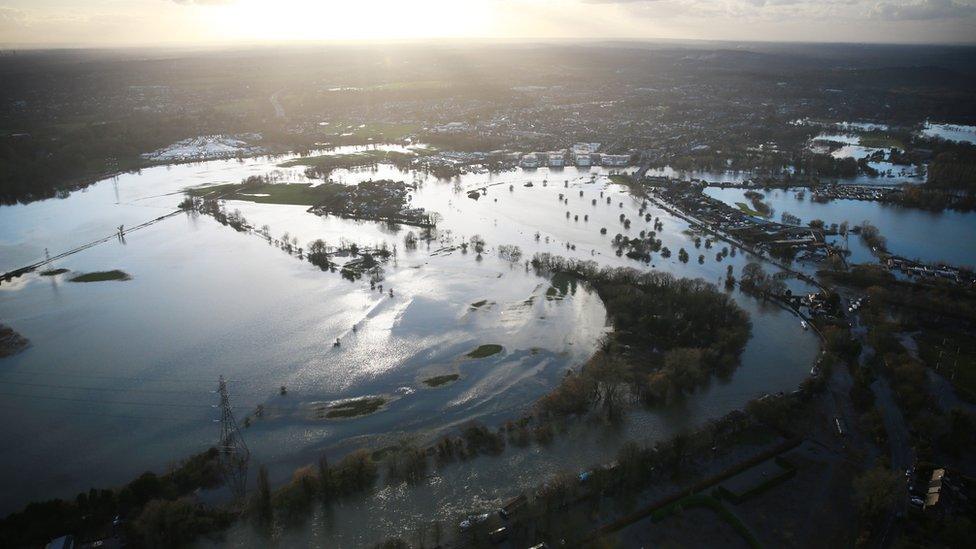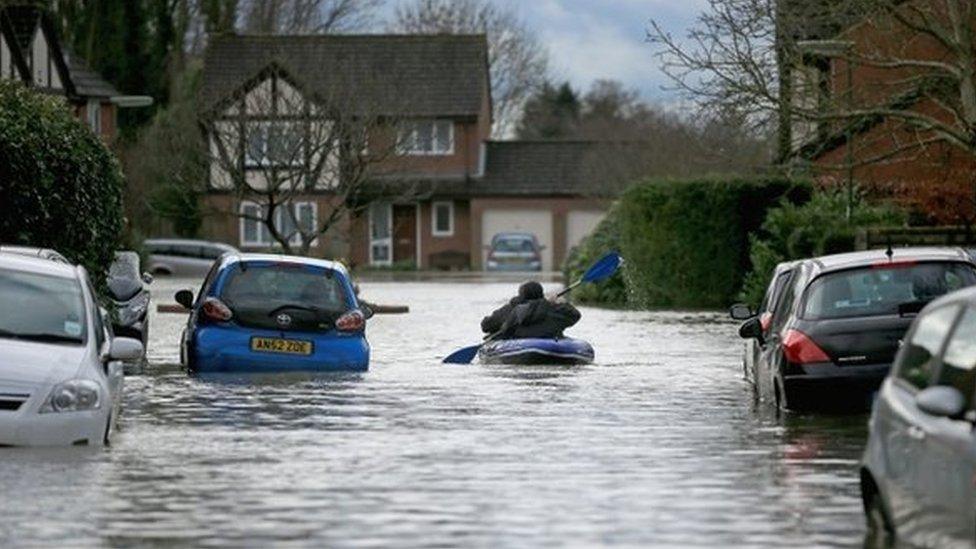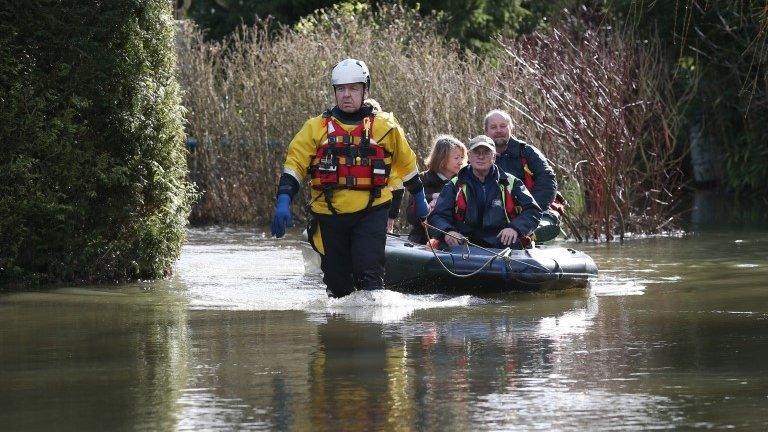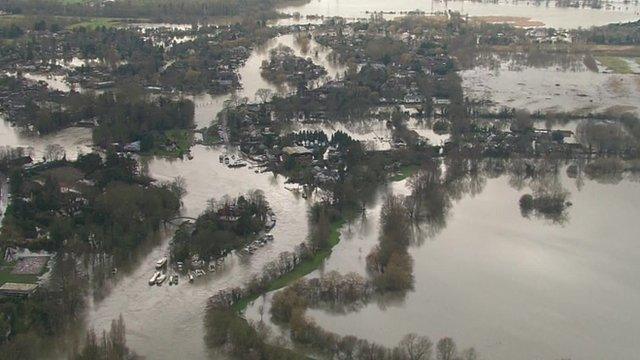River Thames defence plans move forward after 2014 floods
- Published
- comments

Surrey was hit by devastating floods in 2014 as the Thames burst its banks
Planned defences for thousands of properties that were hit by devastating floods seven years ago when the Thames burst its banks have moved forward.
The government has approved a business case for the £500m River Thames Scheme with detailed planning work to begin.
A statement from the River Thames Scheme partnership said it would reduce the risk for 11,000 homes and 1,600 businesses in Surrey and London.
However, part of the scheme covering Berkshire is no longer going ahead.
About 1,000 Surrey homes were flooded and 600 properties were evacuated when the Thames burst its banks in February 2014, following 14 severe flood warnings on the river.
The statement said two new flood channels would be built alongside the Thames to protect Hythe End, Egham, Staines, Chertsey, Shepperton, Weybridge, Sunbury, Molesey, Thames Ditton, Kingston and Teddington - but a third channel in Berkshire was no longer being taken forward.
The government is providing £285m in funding for the scheme and this announcement unlocks the first £60m.
Surrey County Council is supporting the scheme through the £270m flood alleviation programme and other authorities and financial partners are involved, the statement said.

Analysis
By Patrick O'Hagan, political reporter, BBC Berkshire
In the early days of the River Thames Scheme it looked as if it would cover the Datchet, Horton and Wraysbury areas, sparing residents a possible repeat of the floods of 2014 which forced hundreds from their homes.
But with the government unwilling to stump up all the funding, it soon fell to councils like Windsor and Maidenhead to plug the gap.
Its much bigger neighbour Surrey County Council has found the money to move on to the next stage but the Royal Borough was never going to be able to afford it.
The scheme is still on track to protect thousands of people in places like Teddington and Sunbury, but that will be of little comfort to people further upstream in Berkshire.


Zane Gbangbola died at the age of seven during floods in Chertsey in 2014
Seven-year-old Zane Gbangbola died in February 2014, with his parents claiming he was killed by hydrogen cyanide gas washed out of a former dump behind their Chertsey home as the area became flooded, leaving the basement of their home underwater.
An inquest ruled he died from carbon monoxide from a petrol-powered pump used to clear floodwater in the house.
Zane's parents Kye Gbangbola and Nicole Lawler said the pump was not in use.
The couple still believe landfill gases present a risk to communities.
Mr Gbangbola told the BBC: "We campaigned for [flood defences] before Zane was born telling the councils to get on with it and protect communities. Had they done so, little Zane would likely still be alive.
"We reach out and commiserate with those that were flooded. We ask them to remember Zane's death and that we are still fighting for answers."
Aerial footage of Thames floods
Floods minister Rebecca Pow said the scheme would be treated as a nationally significant infrastructure project in order to streamline planning and authorisation.
She said this would "ensure that communities along the river can get the protection they need as quickly as possible".
MPs in Surrey and the county council leader welcomed the announcement.
Council leader Tim Oliver said communities could look forward to "a brighter future" - while Runnymede and Weybridge MP Dr Ben Spencer said it was "a huge milestone".
Foreign Secretary Dominic Raab, the MP for Esher and Walton, said many residents would remember the 2014 floods, adding: "This scheme will help to protect thousands of local homes and businesses from that level of disruption in the future."
Related topics
- Published21 October 2020

- Published22 October 2019

- Published9 August 2015

- Published12 February 2014

- Published10 February 2014
